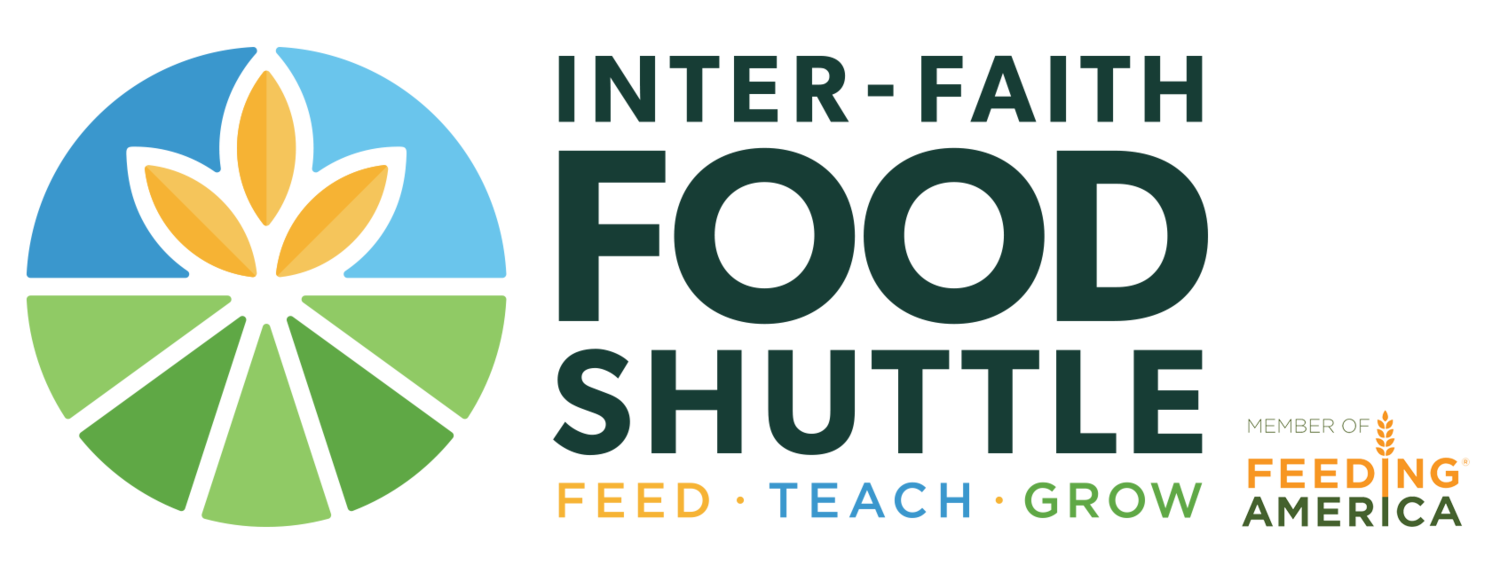FOR IMMEDIATE RELEASE
May 15, 2024
Feeding America’s Map the Meal Gap: Hunger on the Rise in North Carolina
Raleigh, NC – Today’s release of Feeding America’s annual Map the Meal Gap shows increases in food insecurity in 2022 in North Carolina and each county in the seven-county area served by Inter-Faith Food Shuttle. People who face hunger or worry about where their next meal will come from either occasionally or chronically are considered food insecure.
Every year, Feeding America estimates the annual food budget shortfall carried by people facing food insecurity – the gap between the money people facing hunger need to buy enough food and what they have. The Map the Meal Gap study shows a sharp rise in that budget shortfall in North Carolina, from $725 million in 2019 to over a billion in 2022: that 2022 figure is $1,099,431,000.
In North Carolina, 14% of individuals, or 1 in 7 people, were estimated to be food insecure in 2022. That rate was 19.6% for children, or 1 in 5 children facing food insecurity. As in prior years, the rates of food insecurity are widely disparate for racial groups. For North Carolina, among Black persons the rate was 26% for 2022, among Hispanic persons the rate was 22%, and among white, non-Hispanic persons the rate was 10%.
Estimated food insecurity status for select racial and ethnic groups in North Carolina, 2019-2022
Map the Meal Gap is the only study that provides local-level estimates of food insecurity and food costs for every county and congressional district. The study builds upon the USDA’s latest report of national and state data, which showed a sharp increase in food insecurity in 2022 amidst historically high food prices and the expiration of many pandemic-era programs.
“Our food insecure neighbors have goals and dreams – these rising numbers show that being held back by hunger is real and rising,” said Carol Parish, Director of Communications and Policy at Inter-Faith Food Shuttle. “Food security for all is the first step in creating stability and equity, so that all of our neighbors are nourished, healthy, and empowered to build full and financially secure lives. We’ve got to come together not only to meet the daily need but to tackle the root causes of hunger.”
Other findings from Map the Meal Gap pertaining to North Carolina and the Food Shuttle’s seven-county service area, which includes Wake, Durham, Orange, Chatham, Johnston, Nash and Edgecombe:
In North Carolina, the average dollar amount spent on food per meal by food-secure individuals rose steadily from $2.99 in 2019 to $3.91 in 2022.
Rural counties disproportionately experience high levels of food insecurity compared to urban areas. For example, while North Carolina’s overall rate was 14% and the Wake County rate was 11.1%, the Edgecombe County rate was 16.4%.
More children face food insecurity: the rate was 19.6% in North Carolina for children compared to the overall 14% rate.
While nationally nearly 40% of the food insecure population in the U.S. is white, food insecurity rates among Black and Latino individuals exceed those of white individuals in most counties. These disparities are an example of how historical, social, economic and environmental factors have held many communities of color back. In each county in the Food Shuttle’s service area, food insecurity rates for Black and Hispanic persons was higher than for white persons. In Nash County, the food insecurity rate among Black persons was 27%, and in Edgecombe County it was 30%. That means about 1 in 3 Black persons in Edgecombe County faces food insecurity.
Inter-Faith Food Shuttle advocates for benefits, laws, regulations, and policies that tackle systemic barriers to food access and economic security.
Methodology:
Map the Meal Gap uses publicly available data from the USDA ERS, U.S. Census Bureau and Bureau of Labor Statistics to estimate local food insecurity at the county, congressional district and state levels. The study also estimates local meal costs and food budget shortfalls using food price data from NIQ based on the USDA Thrifty Food Plan, and grocery sales tax data for every county and state in the country.

![[PRESS RELEASE] Feeding America’s Map the Meal Gap: Hunger on the Rise in North Carolina ](https://images.squarespace-cdn.com/content/v1/586d2398579fb3ccd8c1dfe5/1715864408728-FMPWLT6Z1UC6GLAER0WD/Blue+with+FA+logo.png)
